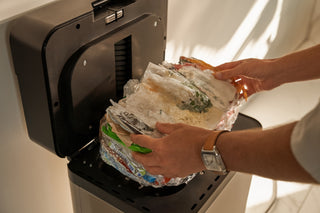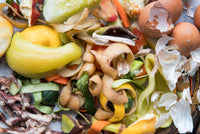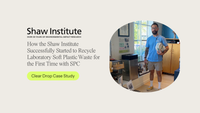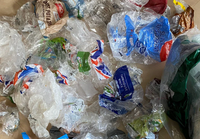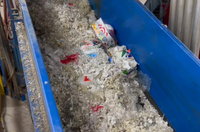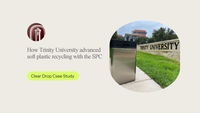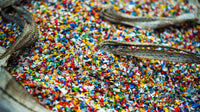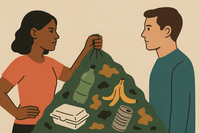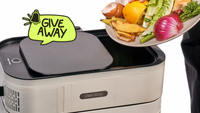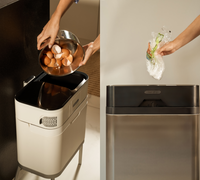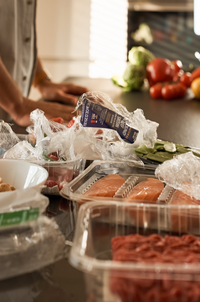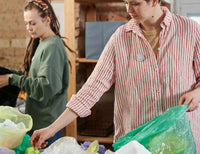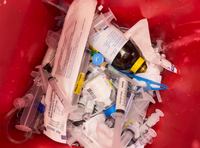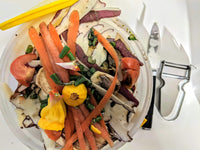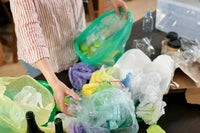Soft plastic packaging surrounds almost every product we buy — bags, wrappers, film, shipping packaging. But when we throw it away, the story doesn’t end. Most soft plastics are not accepted in curbside recycling, so they break apart into invisible microplastics that move into air, soil, water — and even into the human body. This guide explains how everyday soft plastics turn into microplastics and how compacting soft plastics at home can reduce this fragmentation and support proper recycling.
How soft plastics turn into microplastics
Soft plastics can break down due to a combination of UV radiation, abrasion, and weathering. These processes cause the polymer chains in plastics to degrade.
UV Radiation
Sunlight, particularly ultraviolet (UV) radiation, “can break down the chemical bonds within the plastic”, causing it to become brittle and crack. This process, known as photodegradation, can discolor the plastic and reduce its mechanical strength.
What is more interesting is that scientists from the UK and the University of Cape Town in South Africa used complementary studies to show that “plastics of the same composition degrade at different rates depending on the colour”.
The findings demonstrate that black, white, and silver colourants protect the plastic from damaging UV radiation, whereas other pigments do not.
Abrasion
Physical processes like wave action, wind, walking on plastic packaging and contact with rough surfaces “can cause plastic to wear down and break into smaller pieces”. This is especially evident in marine environments.
Weathering
Weathering encompasses UV radiation, temperature fluctuations, and environmental factors. It accelerates degradation and makes plastics more susceptible to fragmentation.
Why is this knowledge important
The impact of these small particles is more drastic than could be imagined. Toxic effects on the environment are investigated in soil, marine systems, and air.
Compacting soft plastics before disposal helps slow fragmentation into microplastics. When stored as a dense block, plastics are less exposed to physical abrasion, sunlight, and breakdown, buying more time before recycling and protecting the environment.
Air pollution
Nearly a dozen studies have shown airborne microplastic concentrations around the world, meaning we breathe microplastics every day. “Airborne microplastics” include fibers, films, fragments, foam, granules, and spheres. Soft plastic particles “may even influence cloud formation”, contributing to climate change.
Marine system pollution
Microplastics enter oceans from wastewater, weathering, fragmentation, and fishing. They act as vectors for pollutants “by adsorbing or releasing contaminants”, which then harm marine organisms through inflammation, oxidative stress, endocrine disruption, and reproductive decline.
Soil pollution
Agricultural soils now hold “23 times more microplastics than oceans”. Plastics in soil may contain up to 10,000 chemical additives, often unregulated, affecting soil health, plants, microbiota, and eventually human health.
Health risks backed by research
Microplastics have been found in human blood, brain, lungs, placenta, and more “according to recent studies”. They can trigger inflammation, oxidative stress, immune disruption, and cardiovascular risks.
The digestive system is directly impacted: microplastics can irritate the gastrointestinal tract and disrupt the microbiome, leading to bloating, pain, and bowel habit changes.
Microplastics were recently found in “human testicles”, potentially linked to declining sperm counts. Endocrine-disrupting chemicals found in plastics — such as phthalates, BPA/BPS, and PFAS — are “associated with hormone disruption and reproductive harm”.
Because soft plastics degrade faster into smaller particles, reducing their exposure and fragmentation at home is one of the most direct prevention steps available today. Compacting soft plastics into secure blocks and sending them for proper recycling reduces the number of particles entering ecosystems and human bodies.
What can you do to lessen the amount of microplastics created from flexible plastics
You can’t eliminate soft plastic overnight. But you can decrease the volume of microplastics created from the packaging you use.
Collect soft plastics separately
Don’t toss soft plastics into general trash. Once mixed and compacted with other waste, they often end up in landfills or incineration — and eventually become microplastic pollution.
Educate your circle
Share facts, not fear. Encourage separate collection at home or at your workplace.
Avoid soft plastic when you can
Refill, reuse, or choose rigid or paper packaging — these materials are more recyclable and less likely to fragment.
Don’t burn or shred it
Burning releases toxins; shredding accelerates microplastic formation.
Use a compaction system (like Soft Plastic Compactor)
Compacting soft plastics reduces surface exposure and prevents early fragmentation. Clear Drop provides a full-cycle solution with real downstream recycling through partnered facilities.
As awareness grows, so does responsibility and the ability to act. The journey from soft plastics to microplastics begins with everyday choices — and in those moments, prevention is possible.
Make Soft Plastic Disposal Safer for the Planet
Compacting soft plastics reduces surface exposure and prevents microplastics from forming during storage, handling, and transportation. Clear Drop® Soft Plastic Compactor (SPC) turns bulky packaging into dense 12×8×4-inch blocks that are easier to store and properly recycle.
Learn more about the Soft Plastic Compactor
Frequently Asked Questions
Do soft plastics become microplastics faster than rigid plastics?
Yes. Thin and flexible plastics break down more quickly under UV exposure, friction, and environmental stress.
If microplastics are so small, why does compaction help?
Compaction protects plastics from sunlight and abrasion, slowing early fragmentation and buying more time before proper recycling.
Can recycling soft plastics reduce microplastic pollution?
Yes. When soft plastics are properly compacted and recycled into durable products, far fewer microplastics enter the environment.
What if there is no soft plastic recycling where I live?
Compact and store soft plastics until drop-offs or mail-in programs are available. Clear Drop SPC enables direct shipping into our certified partner network.


